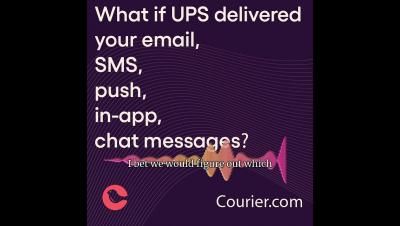Teams | Collaboration | Customer Service | Project Management
Courier
Follow These Considerations For An Effective Push Notification System Design
On our smartphones or in our web browsers, push notifications are part of our daily online lives. Hate them or love them, when implemented correctly, they can be extremely valuable to our experiences. An average of 20% of active website users opt in to receive web pushes, which, while the figure may seem low, is four times the best email subscription rate. The statistics are even higher on mobile devices, with 44% and 91% of iOS and Android users respectively opting in.
Courier Notifications | CEO Troy Goode on the Code Story podcast | Startup | Y Combinator S19
Transactional Email Templates: What Makes Them Effective Plus Six Examples to Learn From
Transactional emails may seem dull and unimportant compared with marketing campaigns. Yet 64% of recipients find them the most valuable type of message in their inbox, making them the most important communication you can have with your customer.
Courier | Building User Notifications strategy at scale | Tommy Dang | Liza Gurtin
Courier Demo | Notification System | Transactional Email Service | Push Notifications | Design Email
Your In-depth Guide to Email Notification Services
Building an email notification system often starts with an “and when this happens, we’ll send an email.” Before you know it, you discover this is more complicated than you initially thought. It’s not your core competency, and you can’t afford to divert engineering time toward email notifications right now. You’re starting to look at a slimmed-down version of what you really want.
How to Design a Scalable Notification System
Creating the perfect notification strategy is like walking a tightrope of constantly changing do’s and don’ts. Send too few, and you may fail to engage your user base. Send too many, and you may quickly annoy them. Utilize multiple channels for a more holistic strategy and risk overwhelming your user. Focus on a single channel, and they might not notice your messages timeously. Send your notification in the morning, and it could get lost amongst all the others.
Top 6 Push Notification Services for Developers in 2021
Most people who interact regularly with smartphones and tablets are familiar with what a push notification is. They want their calendar application to post an alert to their mobile or desktop interface, for example, whether or not they have the app open or their screen locked. If they want to change when, how, or if they receive notifications at all, they simply adjust those in the application settings. For app developers, push notifications are a great way to keep users engaged with a product.
Build vs. Buy: What's better for a transactional email notification service?
“Transactional email is complex, and for most teams, it’s a tedious afterthought rather than a first-class citizen,” according to Postmark, an email API provider. When it comes to both transactional and triggered email, many software teams assume that the logical next step is to start building their own notification system. But moving down this path without a clear view of the complexities and the size of the undertaking might not be the best solution for your business.











